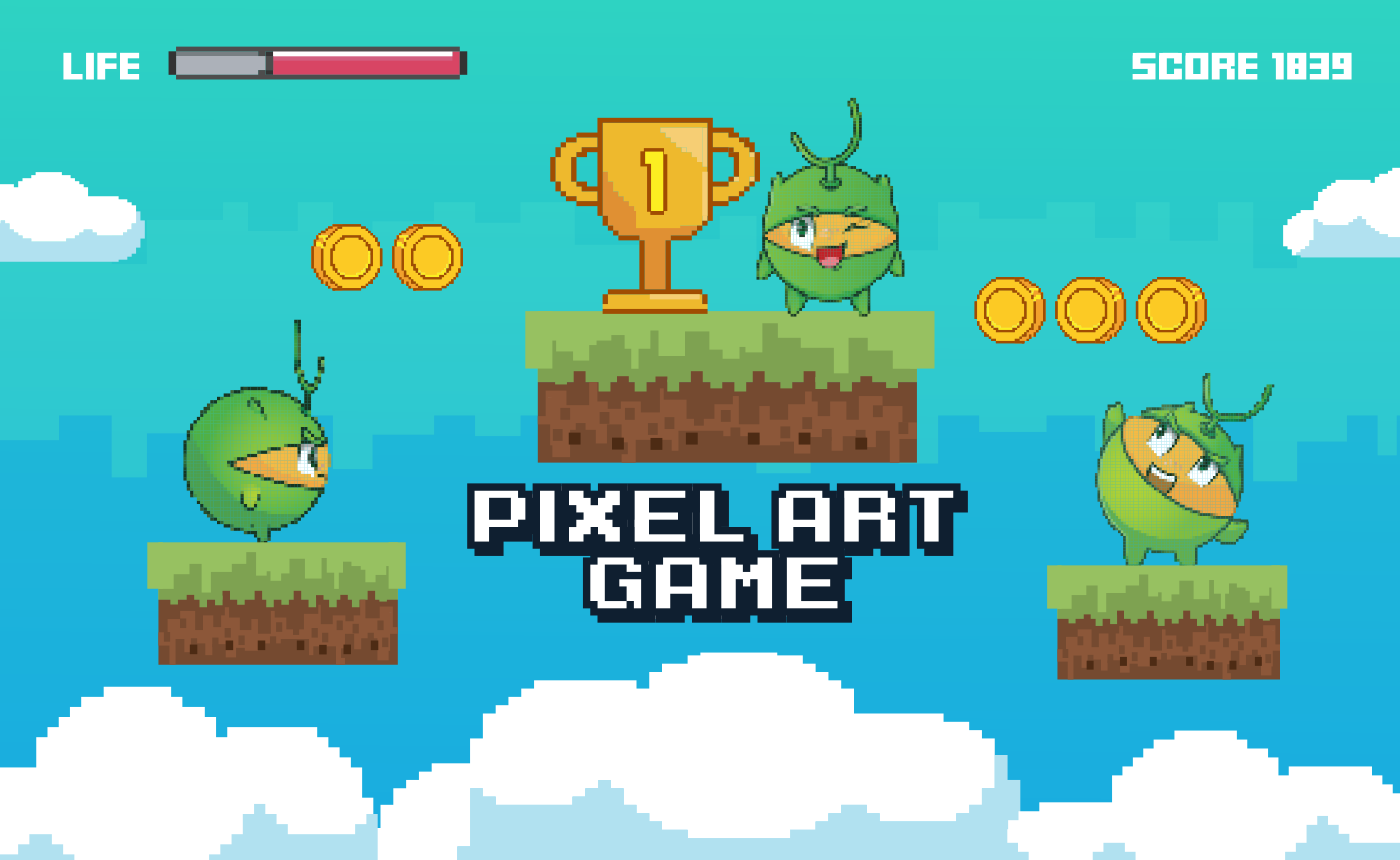
Jakarta, Indonesia - 07 七月 2023
Pixel art and why gamers love it..
Pixel art games have gained significant popularity in recent years for several reasons:
Nostalgia:
Pixel art games evoke a sense of nostalgia among players who grew up during the 8-bit and 16-bit eras of gaming. The simple, blocky graphics reminiscent of older consoles like the NES and SNES trigger a feeling of familiarity and warmth, attracting players seeking a nostalgic gaming experience.
Unique Aesthetic: Pixel art offers a distinctive visual style that stands out in a market dominated by highly realistic or visually complex games. The simplicity and elegance of pixel art can be visually appealing, providing a refreshing break from the intense visual fidelity of modern games. This uniqueness makes pixel art games visually striking and memorable.
Accessibility:
Pixel art games often have lower system requirements compared to graphically demanding titles. This accessibility allows them to run smoothly on a broader range of devices, including older computers or handheld devices. As a result, pixel art games can reach a wider audience, including gamers with less powerful hardware.
Development Constraints:
The limitations imposed by pixel art can foster creativity and innovation. Pixel artists must work within specific constraints, such as limited resolution and color palettes, to create compelling visuals. These limitations encourage developers to focus on gameplay mechanics, storytelling, and other aspects of game design, resulting in games with unique gameplay hooks and engaging narratives.
Indie Game Development:
Pixel art games are often associated with indie game development. Independent developers with smaller budgets and teams may choose pixel art as a practical and stylistic choice. The accessibility of pixel art tools and the relatively simpler asset creation process can empower indie developers to bring their creative visions to life without requiring extensive resources.
Ease of Iteration:
Pixel art allows for easier iteration during the game development process. The relatively small file sizes and quicker production times associated with pixel art enable developers to experiment, iterate, and make changes more rapidly compared to higher-resolution art styles. This agility can result in frequent updates and a more responsive development cycle, which can contribute to the popularity of pixel art games.
Overall, the popularity of pixel art games can be attributed to their nostalgic appeal, unique visual style, accessibility, indie development scene, creative constraints, emotional resonance, and ease of iteration. These factors combine to create a compelling gaming experience that resonates with a wide range of players.